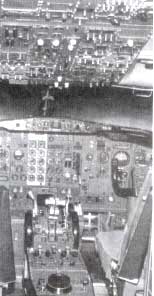Off with flying colours
 SOFTWARE that allows airline pilots to calculate their takeoff speed more accurately should increase safety margins in aborted takeoffs and also cut maintenance costs.
SOFTWARE that allows airline pilots to calculate their takeoff speed more accurately should increase safety margins in aborted takeoffs and also cut maintenance costs.
The speed at which a plane can lift itself off the runway, known as vl, has to be calculated from the various flight characteristics of the aircraft, such as the amount of fuel in the tank, the number of passengers and the weight of the cargo, as well as the conditions at the airport. "It's hard for pilots to do all of this by hand," says Bill Baumergarten, an aircraft performance engineer at Aviation Information Systems (AIS), a Minnesota-based company that has developed the new software.
To make the calculations easy for pilots, plane makers usually recommend that they round the numbers off. Because they always have to err on the side of safety, the rounding errors mean that Vl is often set too high. So either the plane goes much farther down the runway than necessary before taking off, or the pilot has to make the engines work harder, which means they have to be overhauled sooner.
AIS'S new software package, called the On-board Performance System (OPS) can easily eliminate these errors by calculating vl speeds more accurately. It can run on a laptop or even a palmtop personal computer. According to Baumergarten, the OPS increases the margin of safety on takeoff as the lower V1 speeds mean more of the runway is available in the event of an aborted take-off. The package has just gone into use with Dallas-based Southwest Airlines and Sun Country Airlines , an airline company based in Minnesota.
OPS takes into account local temperature, air pressure and runway conditions as well as layout of the airport and obstacles near the airport, such as trees, mountain and buildings. All of these factors can have a profound effect on the speed a jet requires to reach take off safely.
Baumergarten says airlines have found a difference equivalent to an extra 1,360 kilograms of payload between the figures produced by the old calculations and those generated by the OPS.
Related Content
- Order of the National Green Tribunal regarding pollution by Bhabhnan Sugar Mill and Distillery, Ghonda, Uttar Pradesh, 18/10/2019
- Third party to scrutinise vehicle emission levels
- Diwali crackers get louder, silent on pollution
- Soon, open butterfly park at Indroda
- We'll save the Planet only if we're forced to
- Bright side of the moon
